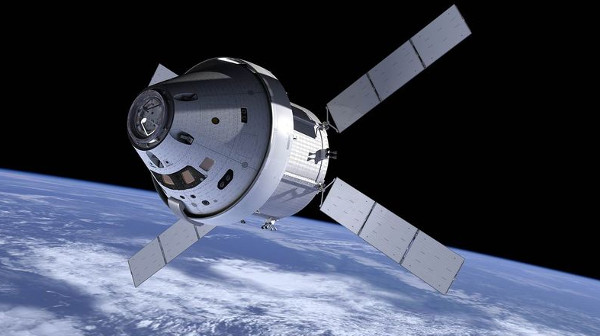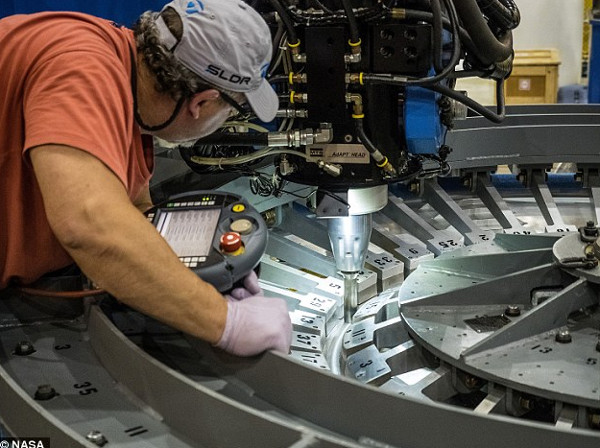NASA moved a billion-dollar spacecraft flight schedule
The US Aeronautics and Space Administration (NASA) decided to reverse the first flight carrying people onto the space shuttle Orion to 2023 due to difficulties arising during development.
NASA left the Orion launch schedule
Earlier, the Orion's flight schedule was set by NASA in 2021. However, unexpected difficulties could lead to further delays in the future, BBC reported on September 17.

NASA spent billions of dollars on the Orion spacecraft project.(Photo: NASA).
Orion had undergone an unmanned test flight last December. The flight took place almost perfectly. Orion ships orbiting the Earth at a height of several thousand kilometers, but does not use a rocket designed specifically for it. This huge rocket called Space Launch System (SLS) is still in development.
- Video: What do astronauts see when they fly back to Earth?
- NASA tested the spacecraft to send people to Mars
- The process of picking up Orion spacecraft with a giant amphibious ship
Stronger than many Saturn V missiles on Apollo spacecraft, SLS will officially go into operation on the Orion's unmanned aircraft at the end of 2018. After that, the duo will be used to bring astronauts fly around the Moon and return to Earth in an experimental program called EM-2 .

Engineers embarked on the construction of the Orion ship for unmanned test flights in 2018. (Photo: NASA).
After reviewing past progress and assessing future challenges, NASA officials identified a number of hardware and software issues that could affect scheduled schedules. One of them is the reliance on reusing components during testing. If a component is broken and needs replacement, it is likely that funding will increase.
Another uncertain factor is the Orion vessel's service compartment, which is manufactured by the European Space Agency. This is the tail section that propels the ship in space, is expected to be used for the first time in the unmanned test flight in 2018 with the SLS system. If an operation problem occurs, re-manufacturing the service compartment may affect the progress of the EM-2 program.

Orion spacecraft drawing.(Photo: NASA).
The minimum funding that NASA proposed for Orion spacecraft is $ 6.77 billion, starting from October 2015 to the first passenger flight in 2023. According to Robert Lightfood, NASA administrator, development funding The ship is up to $ 4.7 billion so far, not to mention a few billion dollars spent in the process of designing Orion design ideas and the source of SLS manufacturing funds.
Orion will fly in Earth orbit. As expected, the ship will transport astronauts through the International Space Station, to the Moon, meteors and possibly Mars. This task will require special technologies to support living in the universe and electronic devices that can operate in strong radiation environments.
- The billion-dollar spacecraft communicating with NASA from the dead
- Soyuz trains on the launch pad
- NASA ship is about to approach super typhoon 16,000km wide on Jupiter
- NASA spacecraft runs out of fuel after a 7 billion km journey
- A series of wonderful images of Jupiter are sent from the Juno-NASA ship
- The private spacecraft Cygnus is about to leave the launch pad
- NASA 'moon' twins
- It sounds crazy, but this hundred billion dollar project could save the Earth
- Rising seawater, NASA's launch pad is repelled
- NASA can bring people to Mars by 2030
- NASA's $ 3.3 billion spacecraft is about to commit suicide on Saturn
- SpaceX launched a spacecraft carrying 2.9 tons of cargo onto ISS
 Van Allen's belt and evidence that the Apollo 11 mission to the Moon was myth
Van Allen's belt and evidence that the Apollo 11 mission to the Moon was myth The levels of civilization in the universe (Kardashev scale)
The levels of civilization in the universe (Kardashev scale) Today Mars, the sun and the Earth are aligned
Today Mars, the sun and the Earth are aligned The Amazon owner announced a secret plan to build a space base for thousands of people
The Amazon owner announced a secret plan to build a space base for thousands of people Constellation Orion: The mysterious connection between interstellar civilization and ancient human civilization
Constellation Orion: The mysterious connection between interstellar civilization and ancient human civilization  NASA plans to have the first unmanned flight to the Moon in 2022
NASA plans to have the first unmanned flight to the Moon in 2022  Close up of testing process of rocket system on NASA Orion spacecraft
Close up of testing process of rocket system on NASA Orion spacecraft  Explore the Orion project - the secret plan of manufacturing spacecraft operated by atomic bombs
Explore the Orion project - the secret plan of manufacturing spacecraft operated by atomic bombs  Reveal shock of aliens building pyramids
Reveal shock of aliens building pyramids  Living on the space shuttle Orion is not as happy as you think
Living on the space shuttle Orion is not as happy as you think 